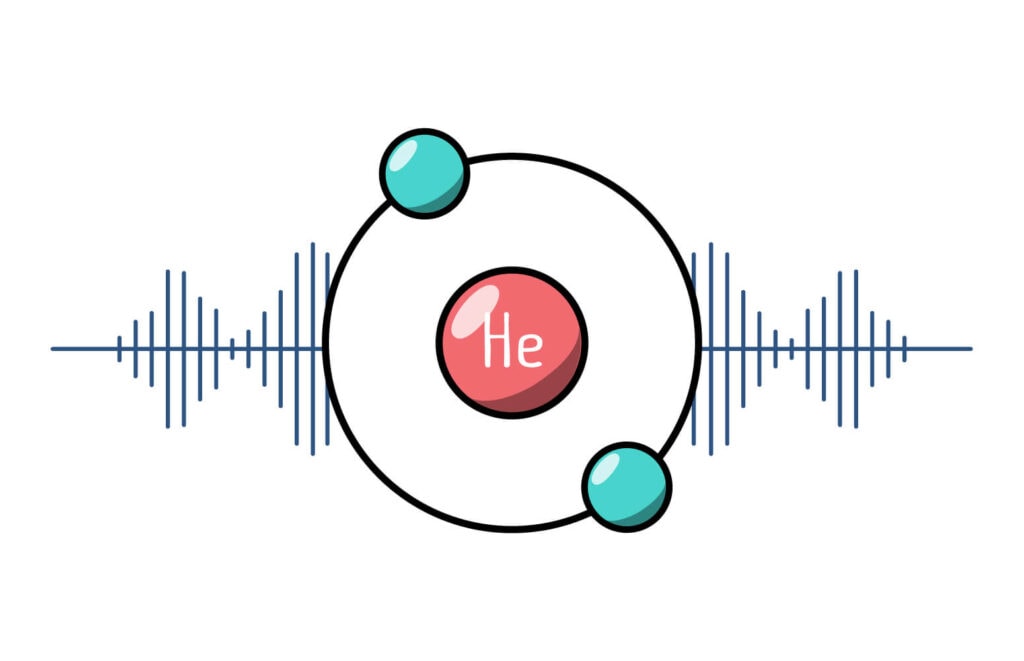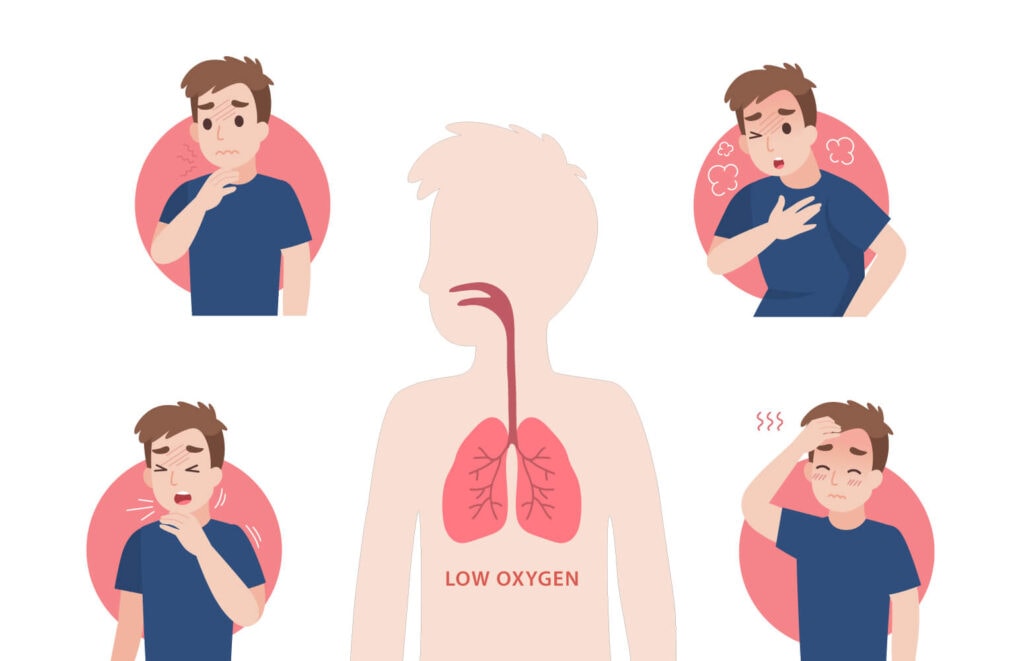We’ve all laughed at a friend or family member inhaling helium from a birthday balloon and speaking in a squeaky, high-pitched voice.
But have you ever stopped to wonder, “Why does helium change your voice?” or pondered the science behind helium voice change? Well, wonder no more! Today, we’ll be diving deep into the marvelous world of helium-induced voice alteration.
This isn’t just a party trick; it’s a fantastic example of physics at play. Before you run away screaming at the mention of physics, let me assure you – I won’t be throwing complex equations or jargon your way.
We will break it down and make it fun, relatable, and easy to understand. By the end of this, not only will you understand the Helium Voice Effect, but you might also become the life of your next party!
So, let’s begin this exciting journey with a brief warm-up exercise. Let’s familiarize ourselves with the physics of sound waves and voice pitch. Trust me, it’s easier (and funnier) than you think!
The Physics of Sound Waves: Understanding Voice Pitch
Sound waves, in essence, are the vibrations that travel through the air (or any other medium) to our ears, enabling us to hear. The pitch of our voice, whether it’s high like a soprano singer’s or low like a bass guitar, is determined by the frequency of these sound waves. The faster the vibration, the higher the pitch, and the slower the vibration, the lower the pitch. Still with me? Great!
Now, here’s where it gets interesting. The speed of sound in a medium (like air in your lungs, for instance) affects the frequency of the sound waves. In other words, the speed at which these vibrations travel can change the pitch of your voice. The faster the sound waves travel, the higher your voice will sound. This is the fundamental principle that underlies the Helium Voice Effect.
But, wait a minute! How does helium come into play here? And why does inhaling helium from a balloon make our voice sound like a cartoon character? Let’s dive into the in-depth explanation of this helium-induced voice alteration.
How & Why Does Helium Change Your Voice: The In-depth Explanation
The helium gas you inhale from a balloon is lighter than the air we typically breathe. It has a lower density, which allows sound waves to travel faster through it. Remember what we learned earlier about the speed of sound waves affecting voice pitch?
That’s right! When you speak after inhaling helium, your vocal cords vibrate at the same speed, but the sound waves travel faster due to the helium. This results in a higher pitch, creating the familiar funny, squeaky voice – the classic helium voice.
What’s fascinating is that helium doesn’t physically alter your vocal cords or the mechanism of your voice production. It merely changes the medium through which the sound waves from your voice travel. And voila! You sound like a chipmunk!
But helium isn’t the only gas that can change your voice pitch. Let’s find out about the impact of other gases on voice pitch.
The Impact of Helium & Other Gases on Voice Pitch

Just as inhaling helium can make your voice sound funnily high-pitched, inhaling denser gases than air can have the opposite effect. Gases like sulfur hexafluoride, often referred to as the voice-deepening gas, slow down the speed of sound waves, resulting in a deeper, almost Darth Vader-like voice.
1. Helium
Helium is perhaps the most well-known gas when it comes to voice pitch alteration. Inhaling helium causes our vocal folds to vibrate at a faster rate, resulting in a higher pitch.
This occurs because helium is a much lighter gas than the air we normally breathe, causing sound waves to travel faster through it. The high-pitched, comical effect of helium on our voices has made it a favorite at parties and entertainment events.
2. Sulfur Hexafluoride
On the opposite end of the spectrum, we have sulfur hexafluoride (SF6). This gas is significantly denser than air, causing sound waves to travel slower through it. When inhaling SF6, our vocal folds vibrate at a slower rate, resulting in a lower pitch.
This effect is often referred to as the “Darth Vader voice” due to its deep and resonant quality. Sulfur hexafluoride is commonly used in scientific demonstrations and has caught the attention of many curious individuals.
3. Nitrous Oxide
Nitrous oxide, also known as laughing gas, is commonly used as an anesthetic and recreational drug. When inhaled, it can result in a temporary change in voice pitch.
Nitrous oxide affects the vocal folds in a way that can cause voice instability, leading to a high, squeaky, or exaggerated voice. This effect is often accompanied by uncontrollable laughter, hence the name “laughing gas.”
4. Carbon Dioxide
Carbon dioxide (CO2) is a naturally occurring gas that we exhale when we breathe out. While it does not directly impact voice pitch, high levels of carbon dioxide in the air can affect our overall vocal performance.
In environments with increased CO2 concentration, our vocal folds may become dry and irritated, leading to a hoarse or strained voice. Proper ventilation is crucial to maintaining vocal health in such environments.
The impact of gases on voice pitch is a fascinating area of exploration. From the playful effects of helium to the deep resonance of sulfur hexafluoride, different gases can alter the way we sound, albeit temporarily.
While these effects may be entertaining, it is important to note that inhaling certain gases can be dangerous or harmful. It is always advisable to exercise caution and ensure proper ventilation when experimenting with gases for voice pitch alteration.
Let’s explore these safety concerns associated with the helium voice experiment.
The Potential Risks of the Helium Voice Experiment

Helium voice experiments have become a popular pastime, especially among children and adolescents. Inhaling helium from a balloon can temporarily change the pitch of one’s voice, resulting in a funny, squeaky sound.
While it may seem harmless and amusing, there are potential risks associated with this seemingly innocent activity. Let’s explore the potential dangers of helium voice experiments and why it is important to exercise caution.
1. Inhalation Risks
The primary risk associated with helium voice experiments is the act of inhaling the gas. Helium is an asphyxiant, which means it displaces oxygen in the lungs.
Inhaling large quantities of helium can lead to a lack of oxygen, causing dizziness, lightheadedness, or even loss of consciousness. This can be extremely dangerous, especially if done without proper supervision.
2. Lack of Oxygen
Helium voice experiments often involve inhaling large amounts of helium in a short period. This can lead to a decrease in the amount of oxygen reaching the brain, potentially resulting in hypoxia.
Oxygen deprivation can have serious consequences, including confusion, disorientation, and in severe cases, brain damage or even death. It is crucial to prioritize the availability of oxygen for the body’s proper functioning.
3. Balloon-Related Hazards
Balloons used for helium voice experiments can pose additional risks. Inhaling directly from a helium-filled balloon can lead to the risk of choking or suffocation if the balloon accidentally gets lodged in the throat.
Children, in particular, should be closely monitored to prevent any such accidents. Additionally, swallowing small pieces of a burst balloon can also be a choking hazard.
4. Allergic Reactions
Some individuals may be allergic to helium gas. Breathing in helium can trigger allergic reactions, ranging from mild symptoms like sneezing or itching to more severe reactions such as difficulty breathing, chest tightness, or anaphylaxis. It is essential to be aware of any personal allergies or sensitivities before engaging in helium voice experiments.
5. Encouraging Risky Behavior
Helium voice experiments may inadvertently promote risky behavior. The trend of inhaling helium to change one’s voice is often shared on social media platforms, leading to peer pressure and the desire to participate. This can result in individuals engaging in unsafe practices or attempting to inhale helium from unsafe sources, such as compressed gas cylinders.
While helium voice experiments may appear harmless and entertaining, it is crucial to be aware of the potential risks and exercise caution. Inhalation of helium can lead to oxygen deprivation, allergic reactions, choking hazards, and other associated dangers.
It is advisable to avoid inhaling helium directly from a balloon and instead enjoy the funny voice effects by simply talking into a balloon filled with helium. Safety should always be a priority, and responsible behavior should be encouraged to prevent any unnecessary risks or harm.
Conclusion: Understanding the Implications of the Helium Voice Effect
Understanding the helium voice effect isn’t just about knowing why inhaling helium makes your voice squeaky. It’s about appreciating the fascinating interplay of physics in our daily lives. It’s about realizing the profound impact of something as simple as the medium through which sound waves travel on something as personal as our voice.
So, the next time you see a helium balloon, remember it’s not just a party accessory. It’s a testament to the incredible world of physics and the wonders it holds. However, don’t forget the potential risks associated with inhaling helium or any other gas. Stay curious, keep exploring, and let the marvels of science continue to amaze you!
Please, always remember the importance of safety when experimenting with the helium voice effect. The world of science is vast and fascinating, but it is our responsibility to navigate it wisely. Stay safe, stay curious, and keep exploring the incredible phenomena around you!

